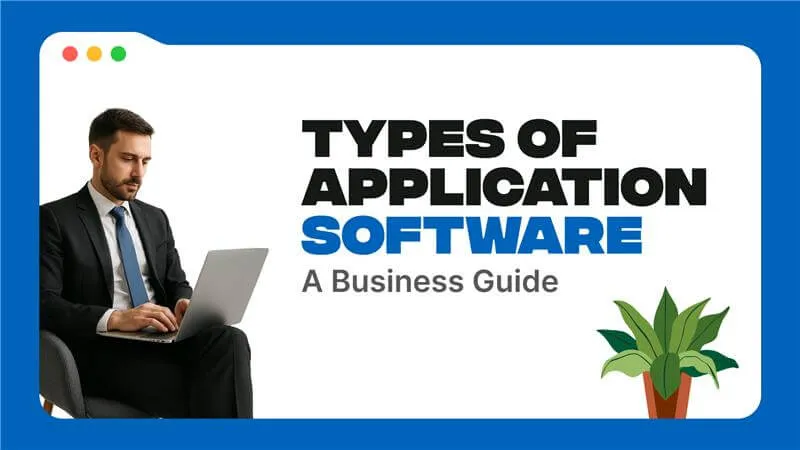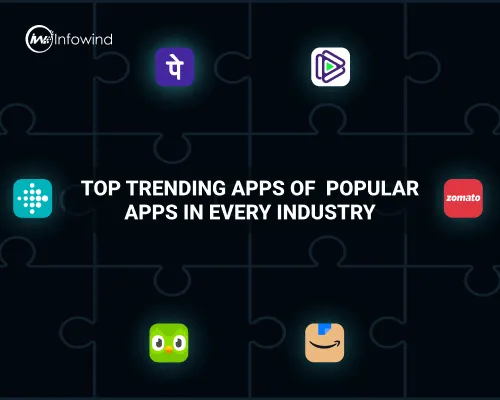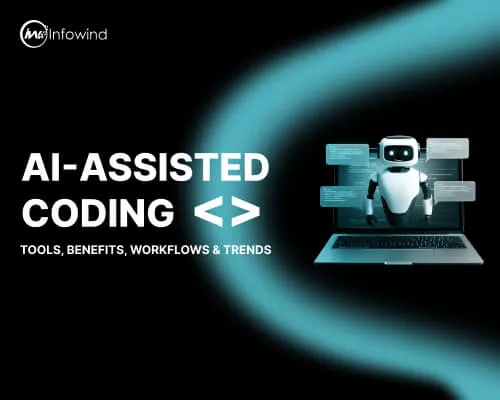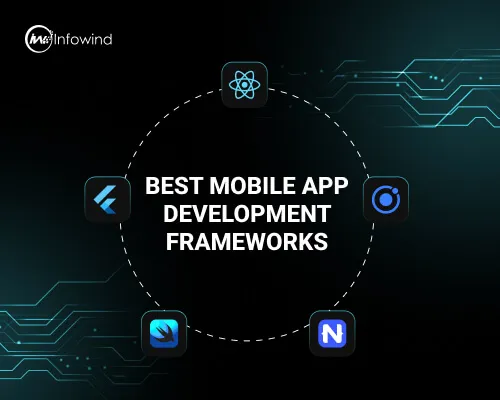The new age of digital-first, however, means that understanding how the application software works has stopped being a choice, but a must-have of every single competitive business now. In simple terms, application software is the software and instruments that enable individuals and enterprises to efficiently complete certain tasks or activities, e.g., word processing and data analysis, project management, and customer relationship management (CRM). Statista estimates that, in 2026, the spending across the globe on enterprise software will have grown to $856 billion, which is how seriously important these tools have become.
The knowledge about application software can enable businesses to have the right tools, enhance productivity, and also have an advantage over competitors. When you run a startup or coordinate a large enterprise, it might be advantageous to use some of your time and find out what software solutions are available out there as it is money and operation-wise quite economical and customer-satisfaction promoting.
This blog will reveal everything you need to know about application software: what application software is, what is out there, and the secrets to choosing the best possibilities to drive your business success in our digital era.
What is Application Software?
Application Software is a category of computer program that facilitates the performance of a selection of tasks or the resolution of a certain problem by the end user. On the contrary, system software operates behind the screen, and it controls the hardware and the core of a computer. System software is the engine and application software are tools that you use to do work.
Application software is important in a business’s day-to-day activities. It speeds up everyday assignments and makes them more precise, and more systematic. An example is the word processors such as Microsoft Word that enable the employees to develop and modify documents easily and share them.
Customer Relationship Management (CRM systems) enable companies to deal with customer information, sales tracking as well as better relationship building. Marketing tools like the use of Adobe Photoshop or Canva enable the design of attractive graphics to aid in marketing the brand.
The application software is available in a variety of types, each of which is suited to a particular purpose in business. Its popular categories are office suites, project management software, accounting software, and industry-specific software.
With a clear knowledge of what application software is and how it is different from system software, it will help businesses pick the right tools to enhance productivity and efficiency. There are time savings, fewer errors, and the opportunity for the teams being able to concentrate on what is important in this, serving customers and expanding the business.
Major Types of Application Software (with Business-Focused Use Cases)

Any company cannot operate without using various Types of Application Software to manage everyday operations, optimize processes, and increase their efficiency. By getting the gist of the functions of each type and their application in real business life, companies will be able to select the right tools and prevent expensive errors. Let us divide application software types into the most common and explain how they make the engines of modern workplaces.
1. The Word Processing Software
Word processing software assists in creating, editing, and formatting text documents. Such popular examples are Microsoft Word and Google Docs.
Word processors are essential in a business environment as they are used to prepare proposals, write reports, composition of contracts, and compositions of employee manuals. The teams will get to create polished documents effectively via features (such as spell check), templates, and real-time collaborations.
To give an example, marketing departments multi create blog posts in Google Docs, and legal groups collaborate in Microsoft Word to come up with an agreement with highlighted editing.
2. Spreadsheet Software
Spreadsheet programs are tools that are employed in arranging, computing, and completing statistical data. Popular tools are Google Sheets and Microsoft Excel.
Spreadsheets are used by financial teams to do budgeting, forecasts and financial models. They are implemented by sales departments to monitor performance parameters or to design sales dashboards.
However companies ought to bear in mind that although spreadsheets are effective in analyzing data, they cannot substitute an entire Enterprise Resource Planning (ERP) system that can show real-time data of various departments.
3. Database Software
Database software maintains, organizes, and manages extensive business information that has a specific format. These include examples of Excel, MySQL, and MySQL Database.
Database software is applied by companies to manage customer databases, inventory, or staff data. As an example, a company retailer might monitor the inventory level of the products using MySQL whereas an HR department might manage the files of the staff using Microsoft Access.
Maintained databases make the information viable, unchanging, and readily accessible when there is a demand.
4. Presentation Software
Presentation software enables teams to create attractive-looking slideshows to be used at meetings, training, or even marketing presentations. The most popular of such tools are Microsoft PowerPoint and Canva.
PowerPoint is another tool used widely by sales teams that tend to use it to sell products to clients, and Canva is another one used by startups to create clean, modern investor decks.
Quality presentation programs give the power to integrate text, graphics, charts, and even video with ease, thus making an otherwise sophisticated idea palatable to any listener.
5. Project Management Tools
Project management tools assist teams in the planning, organizing, and monitoring of tasks and projects. Among the most popular options, we could find Trello, Asana, and Jira.
As an example, a software development team may utilize Jira to control bugs and a new feature release. Trello allows marketing teams to schedule their content, and Asana helps startups plan when tasks in different departments need to be launched.
Such instruments enhance accountability, minimize missed deadlines, and keep everyone in touch with each other.
6. Customer Relationship Management (CRM) Software
CRM software assists companies in taking control of customer interventions, commerce pipelines, and support tabs. Such major CRM tools are Salesforce and HubSpot.
A CRM monitors all of the lead and customer touchpoints to enable the salespeople to follow up appropriately and the marketing people to segment their audiences to build relevant campaigns.
As an illustration, a small business may apply HubSpot to follow up a series of emails and an enterprise might apply Salesforce to predict sales and coordinate world accounts.
7. Enterprise Resource Planning (ERP) Software
An ERP system integrates a variety of business processes into a single, unified platform. Some of the popular ERP systems are SAP and Oracle ERP Cloud.
An ERP links the supply chain, HR, operations, and financials in real-time, whereas spreadsheets only manage individual budgets. As an example, a manufacturing organization may use SAP and trace its raw material, production schedule, and sales orders in the same system.
This integration maximizes data union, limits key entry, and offers executives valid information to make more sensible decisions.
8. Accounting Software
Accounting software assists companies in regulating money and also invoice billings, payroll, and tax compliance. The most common ones are QuickBooks, Xero, and Zoho Books.
QuickBooks is one of the most commonly used programs in small businesses to conduct their daily bookkeeping, produce financial reporting, and prepare taxes without difficulty. Freelancers may use Zoho Books to receive and send business invoices and monitor payments whenever and wherever.
Enterprise resource planning enables businesses to minimize their errors by automating recurrent tasks in accounting thereby giving them time to strategize.
9. Images & Multimedia Software
Multimedia and graphics software allows editing and creating images and videos, as well as other visual material. The best examples are Adobe Photoshop, Adobe Illustrator, and Figma, as well as Canva.
These tools are used to create brand resources, social media imagery, and product mock-ups. To take an example, Figma will be used by the designer to collaborate with an interface, and Photoshop can be used to edit product pictures with quality content on e-commerce websites.
10. Communication Software
Communication software enhances real-time communication among teams irrespective of their workplaces. The most popular ones are Slack, Microsoft Teams, and Zoom.
Slack and Microsoft Teams cooperate with remote teams by allowing them to communicate in instant messaging, share files, and collaborate on documents. Good communication software eliminates most instances of confusion and ensures that projects run.
11. Web Browsers- Email- clients
Despite being little-thought-out factors, web browsers and email clients are essential examples of Types of Application Software. Web-based tools and the possibility to find research information immediately are provided by such browsers as Google Chrome or Mozilla Firefox, which can be used by employees.
Email programs such as Microsoft Outlook or Gmail allow for organizing communication, managing meetings, and contacts. Browsers and email clients combined have become the roots of contemporary online communication.
Why Knowing the Types of Application Software Matters
The selection of proper application software results in saving time, cost, and aids businesses to remain competitive. Using the writing of business papers, customer care relationship management, as well as simplifying company-wide procedures, every tool has a definite objective.
With the realization of which software addresses which needs, businesses can utilize their financial investments wisely, work smart, and even grow quickly in the current technology-driven world.
Custom vs Off-the-Shelf Application Software
When making a selection of suitable Application Software to use in your business, you are bound to encounter a main issue, that is the use of custom-made software or off-the-shelf software. Learning the difference would save both time and money.
An off-the-shelf application software is ready-made and is available to use, such as Microsoft Office, Quickbooks, or Slack. It is low priced, easy to implement or install, and is updated together with the provision of customer services. But it is also not the most appropriate one to suit all distinct business processes.
Custom software, in turn, is created concerning your business needs. It is customized to suit unorthodox worklists, integrate with established systems, and offer capacities that usual tools cannot. The negative aspect here is that the customized software may take a longer time, is expensive to develop, and may need some maintenance.
With the majority of the routine jobs, off-the-shelf solutions are fine. However, in case your company has complicated processes, like unique production lines, customer services, or stringent standards to follow, bespoke software would provide an edge over your competitors and would benefit in the long run.
Understanding when to use custom or off-the-shelf application software helps businesses align their budget with their growth goals.
Cloud-Based vs On-Premise Application Software
The companies that intend to choose Application Software have to choose among the solutions on the cloud and premise. Each one of them has its unique advantages and caveats.
The web-based application software is stored on distant servers and enters through the internet. These are Slack, Google Workspace, and Salesforce. Such tools do not need local installation and enable teams to work remotely. The model of cloud software is mainly a subscription-based one, which reduces up-front expenses and allows flexibility of scaling: companies can add or delete their users.
On-premise application software, however, is executed and operates on local servers and computers maintained by a business company. They include a traditional ERP system or a locally hosted database. Although this provides companies with increased control over the data and security, it also usually requires front-end cost, IT staffing, and the continued care of hardware.
The main differences relate to cost and scalability: cloud software lowers the infrastructure cost and expands your business. Maybe on-premise solutions are a good fit in cases where high data security (e.g. financial institutions) or data security (e.g. government agencies) are of critical importance.
As an illustration, a tiny startup can opt to use such cloud-based CRM as HubSpot, defray the expenditure, and work remotely. In the meantime, a major business dealing with confidential information would possibly use on-premise ERP, such as SAP, to exercise greater control.
The advantages or disadvantages of cloud-based and on-premise application software are very essential to the business since they provide them with informed future-oriented decisions.
Choosing the Right Type of Application Software for Your Business

The most appropriate Application Software to use in your business should not be a cumbersome task as long as you adopt a straightforward strategy. First, you need to discover your fundamental business requirements and everyday work processes. List out activities that may be automated or reduced in time.
Then, important aspects have to be taken into account:
- Scalability – This is an important question considering that you want to grow with the software.
- Usability – How simple is the interface to your team?
- Integrations – When connecting with other tools, will it do it without a hitch?
- Cost – Evaluate the total cost of ownership, not just the initial expenses.
Pro tip: Do not be in a hurry. Whenever installing software, you should check it using a free trial or a demo. Engage the end-users to use it daily; their opinions matter.
Based on my experience in assisting companies in putting in place both custom and off-the-shelf application software, successful companies consider application solutions that match long-term goals rather than short-term issues.
By studying them attentively, you can invest in Types of Application Software to improve productivity, mitigate manual work, and promote sustainable growth.
Emerging Trends in Application Software
The path to leading the current digital economy is through monitoring intuitive trends in application software. The development of modern tools and methods is extremely fast in an attempt to satisfy the increasing need for speed, safety, and versatility.
A primary tendency is the incorporation of AI technology with such attractive software systems as customer relation management (CRM systems) and project management (PM tools). CRMs, like Salesforce Einstein, powered by AI allow the sales teams to anticipate how customers will behave and automate the follow-ups. In the same vein, AI-assisted PM applications can propose the order of the tasks and identify project risks prior to their escalation.
The other transition is the emergence of low-code and no-code platforms. They enable the non-developers to develop apps and automate processes with little knowledge of coding. The trend minimizes the cost of development and makes the teams capable of customizing software in little time depending on the changing business requirements.
The market is also redefining due to the growth of Software as a Service (SaaS). Firms are increasingly choosing less expensive to deploy, scalable, and regularly updated solutions that are modular and easy to subscribe to. Businesses opt to purchase versatile tools that can easily combine rather than purchasing bulky software bundles.
Lastly, the world has developed cyber threats, which is why security-first development in the application software is an essential requirement. Vendors are implementing more effective encryption, checks of compliance, and real-time monitoring of threats.
Conclusion
The most effective way to stay competitive in today’s digital-first business environment is by choosing the right application software. Understanding the different types of application software and weighing the pros and cons of custom vs. off-the-shelf solutions enables smart decision-making that saves time, cuts costs, and boosts productivity.
This is the right time to review the tools you are using. Are they satisfying the needs of your team or should they be changed? Take into consideration such emerging trends as AI integration or low-code platforms to keep up with the times.
Get expert help in case you need direction. We have our Mobile App Development Company, which does tailored mobile programs. Or in case your site requires a boost of performance, our Web Development Company will be at your service.
Invest smartly in proper application software now and open the doors to easier operations and healthy growth of your business in the future.






